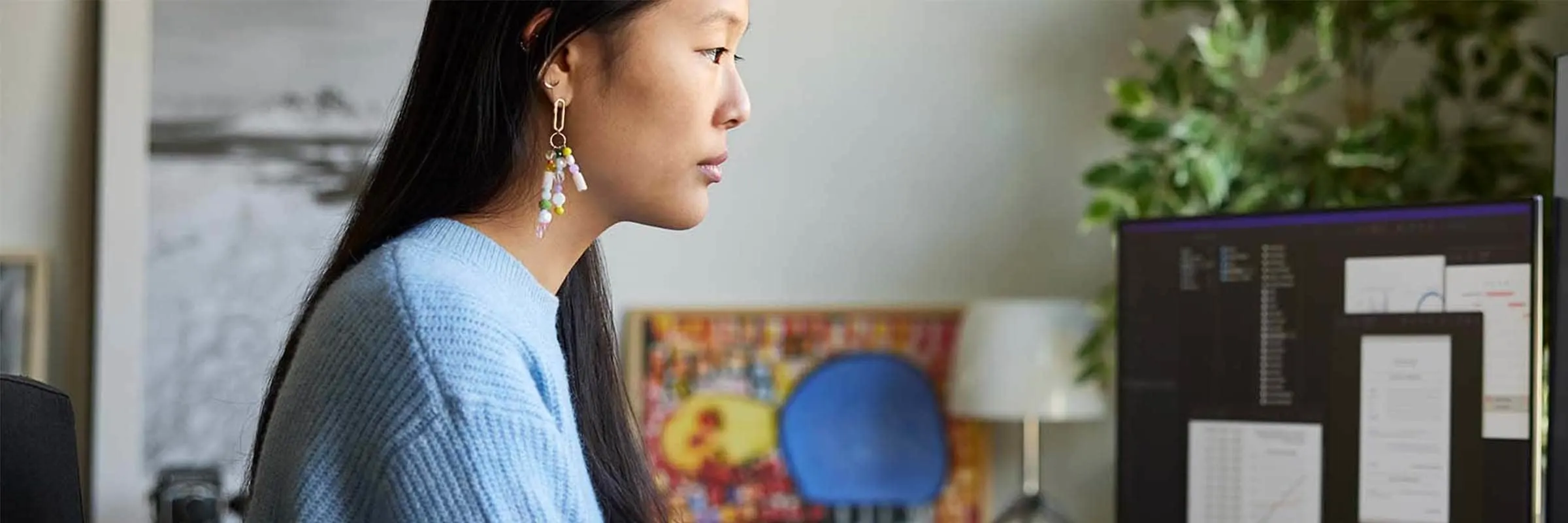What we'll cover
What to consider when using digital payment apps and wallets
Safety and security best practices
Tips for keeping your information safe
With mobile payment apps and digital wallets, cyber purchases are even easier and faster than ever before. But are they safe?
The short answer: Yes, as long as you’re careful and observe some cybersecurity best practices. Help keep your digital shopping secure with these simple guidelines.
Only download reputable apps (and update regularly)
Be sure any mobile payment app or digital wallet app you download is through the official Apple App Store or the Google Play Store, or the financial institution’s official website. Some things to look out for are typos in the description or logos that look off. Also, be sure to take a look through the ratings and reviews for any red flags like low star ratings or customer feedback that sounds overly promotional (these may be false advertising).
If it seems suspicious, err on the side of caution and don’t download the app. For the apps you add to your devices, stay on top of software updates. App updates occur when developers improve or modify app functionality, enhance security measures and more, so turn on automatic updates to take advantage and help keep things secure.
Validate your information for any incoming or outgoing transactions
Before you finalize a digital payment, double-check all the information, including the sender or recipient’s name and the amount of the transaction. Paying close attention to the details can help you catch errors so you don’t end up sending a much larger payment than you intended or paying the wrong recipient.
Check your privacy settings
You wouldn’t let strangers borrow your credit card, so be sure to protect your private information online too. Start by checking the privacy settings on any digital payment app or digital wallet you use. Ultimately, it’s up to you how much you want to share or not. For instance, many apps ask for your location or may make your transactions public by default. Check the app settings as well as those on your device to ensure you’re not over-sharing.
Monitor financial accounts to catch fraudulent activity quickly
If you use digital payment apps, they’re likely connected to one or more of your bank accounts or credit cards. It’s always a good idea to keep an eye on transactions to spot any suspicious activity early. If you spot a transaction you didn’t authorize, report it to both the app and your bank or credit card company.
Validate QR codes before scanning
Scanning a code on your phone makes paying on the go a breeze. But before you scan a QR code, take some precautions. Don’t download an app with a QR code. Instead, use your phone's app store. The same goes for a QR code scanner app. Most phones have a built-in scanner through the camera, which is typically more secure.
When possible, you should avoid making payments through a site navigated through a QR code. Manually entering a URL is usually a safer bet for ending up at the correct site. If you get an email saying a payment for a recent purchase failed and it directs you to complete the payment through a QR code, verify with the company before doing so.
If you find a transaction you didn’t authorize, report it to the app and your bank or credit card company.
Don’t use payment apps while on public Wi-Fi
While it may be convenient, you should think twice before using payment apps while you’re connected to public Wi-Fi. These networks often have low security and may leave your personal information vulnerable to hackers and scammers. When you’re on the go, turn off both automatic Wi-Fi and Bluetooth connectivity on your phone to avoid automatically connecting to public Wi-Fi.
Set up multifactor authentication when available
When it comes to staying secure while using digital payment apps, you can never be too careful. Whenever possible, turn on multifactor authentication on all payment apps and sites. MFA provides another layer of security. For example, if a hacker steals your account password, the second security check (often a code sent to your phone or email) will prevent them from gaining access.
Do not save your payment information
While it’s tempting to store your bank or credit card information in your digital payment apps, it’s safer to manually enter it each time. You can also opt to have your digital wallet fill it in. Bonus: In addition to keeping your financial information more secure, it can help prevent impulse shopping. When you have to enter your payment info each time, you’ll have more time to consider if you really need those shoes in every color.
Use unique passwords for each account
Have you been reusing the same password for years? It’s time to switch it up. The tried and true advice to create unique passwords for each online account applies to mobile payment apps and digital wallets too. If your password is stolen or involved in a data breach, you can prevent the problem from spreading. And remember — never share your passwords with others. Need tips on how to build a strong password? Look no further than our password guide.
Enable facial or fingerprint recognition
Strong, unique passwords and multifactor authentication are a good start, but if you want to level up your security it’s time to enable facial or fingerprint recognition. While hackers can figure out your password, or access it through a leak, it’s far more difficult for someone to steal your facial or fingerprint identity.
Use digital payment apps with peace of mind
Digital wallets and payment apps have made paying online easier than ever. Just be sure to put security first. By taking proper precautions and following best practices, you can utilize this technology while doing your part in keeping your financial information safe and secure.
Next in the series



